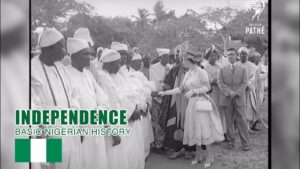The Benin Kingdom: Art, Culture, and Influence

Introduction
The Benin Kingdom (also known as the Edo Kingdom) was one of Africa’s most advanced pre-colonial civilizations, flourishing in what is now southern Nigeria from the 11th century until its fall in 1897. Renowned for its bronze sculptures, ivory carvings, and complex political system, Benin left a lasting legacy in African art, culture, and history. This article explores the kingdom’s artistic achievements, cultural traditions, and its influence on modern African identity.
1. The Origins and Rise of the Benin Kingdom
1.1 Early Foundations (Pre-13th Century)
-
The Edo people, the original inhabitants of Benin, had a well-organized society before the rise of kingship.
-
According to oral tradition, the first dynasty was established by Ogiso rulers (“Kings of the Sky”).
1.2 The Arrival of Oranmiyan and the Oba Dynasty
-
In the 13th century, the Yoruba prince Oranmiyan (son of Oduduwa) was invited to rule Benin.
-
His son, Eweka I, became the first Oba (king) of Benin, establishing a dynasty that continues today.
1.3 The Golden Age Under Oba Ewuare the Great (1440–1473)
-
Expanded Benin’s territory through military conquests.
-
Built massive walls and moats (known as the “Walls of Benin”, one of the world’s largest man-made structures).
-
Reformed administration, religion, and arts, making Benin a regional power.
2. The Artistic Brilliance of Benin
2.1 Benin Bronze and Brass Works
-
Lost-Wax Casting Technique: Benin artisans perfected this method to create intricate sculptures.
-
Famous Works:
-
Queen Idia Mask (a symbol of Benin royalty, now a cultural icon).
-
Plaques depicting court life, warriors, and Portuguese traders.
-
-
Purpose: Art was used to record history, honor Obas, and decorate the royal palace.
2.2 Ivory and Wood Carvings
-
Benin’s ivory carvers produced ceremonial tusks, bracelets, and statues.
-
Many pieces were gifts to European traders and diplomats.
2.3 The British Punitive Expedition (1897) and Looted Art
-
In 1897, British forces invaded Benin, burned the palace, and looted thousands of artworks.
-
Today, many Benin Bronzes are held in museums worldwide (e.g., British Museum, Berlin Ethnological Museum).
-
Repatriation Efforts: Nigeria and the Benin Royal Family continue to demand the return of stolen artifacts.
3. Culture and Society in the Benin Kingdom
3.1 Political Structure
-
The Oba: A divine ruler with absolute authority but advised by chiefs.
-
Uzama Nobles: Hereditary chiefs who crowned the Oba.
-
Guild System: Artisans (brass casters, weavers, blacksmiths) were organized into guilds.
3.2 Religion and Traditions
-
Edo Beliefs: Worship of ancestors and deities like Olokun (god of the sea).
-
Annual Festivals:
-
Igue Festival: A royal ceremony for renewal and blessings.
-
Eho Festival: Honors ancestors and past Obas.
-
3.3 The Benin Language (Edo)
-
The Edo language remains widely spoken in southern Nigeria.
-
Proverbs, folktales, and oral histories preserve Benin’s wisdom.
4. Benin’s Influence on Modern Africa and the World
4.1 Impact on African Art
-
Benin’s bronze techniques influenced other West African cultures.
-
Modern African artists draw inspiration from Benin’s legacy.
4.2 Benin in the Diaspora
-
The transatlantic slave trade spread Edo culture to the Americas.
-
Elements of Benin traditions survive in Brazil, Cuba, and Haiti (e.g., Edo-derived words in Afro-diasporic religions).
4.3 Modern Benin (Edo State, Nigeria)
-
The Benin Royal Palace still stands, and the Oba remains a key cultural leader.
-
Edo State celebrates Benin heritage through museums (e.g., Benin National Museum) and festivals.
Conclusion
The Benin Kingdom was a beacon of African civilization, producing masterpieces that rivaled Europe’s Renaissance art. Despite colonial destruction, Benin’s culture endures, inspiring pride in African heritage. The ongoing fight to reclaim looted art symbolizes the kingdom’s unbroken legacy.
Leave a Reply